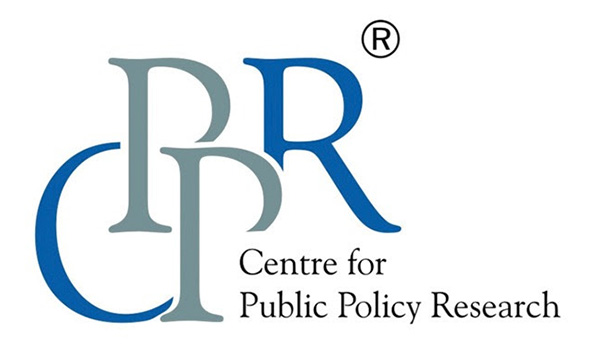Articles

E book – Self Control or State Control? You Decide (Malayalam Translation)
February 1, 2021
Budget 2021 | Feel-good factor that would nudge consumption is missing
February 1, 2021Budget 2021 | Reviving ailing economy through infrastructure sector?
Nirmala Sitharaman’s investment push for the sector will yield results only with timely and effective implementation. The efficiency and effectiveness of these investments will be closely watched

Finance Minister Nirmala Sitharaman presented the first ‘paperless’ Budget a few hours ago. The coronavirus pandemic disrupted the country’s economic well-being and all eyes were on the Union Budget 2021-22, eagerly looking forward to the government’s strategy to revive the economy. There were high expectations from the infrastructure sector as the multiplier effect will facilitate growth and employment, thereby accelerating a sustainable recovery.
The Budget rested on six key pillars, with “Physical & Financial Capital and Infrastructure” cited as the second pillar, promoting infrastructure as one of the core focus areas of the Budget with several schemes, new investments and reforms.
The government launched the National Infrastructure Pipeline (NIP) for FY 2020-25 to boost. It majorly looks into energy, urban infrastructure, road, railways, etc. This will be funded by the Centre, state government and the private sector, with a funding share of 39 percent, 40 percent and 21 percent, respectively.
COVID-19 had affected the state’s contributions and private players, thereby demanding more support from the Centre. Through the Budget, the finance minister proposed to act through three concrete steps:
- Setting up a Development Finance Institution for infrastructure financing
- Monetising operating public infrastructure through a National Monetization Pipeline.
- Increasing the capital expenditure from Rs 4.39 lakh crore (revised estimate of 2020-21) to Rs.5.54 lakh crore.
Previously, 6,835 projects were launched under the plan, which has now been expanded to 7,400 projects. The significant increase in NIP allocation, almost 34.5 percent more than the previous year’s estimate, can be seen as a positive step. Setting up of a new institution may show results in the short run, still, its viability, in the long run, needs to be assessed, as multiple institutions in the sector might lead to an increase in procedural and operational delays.
The Asset Monetization Programme is a welcome step to improve the financing options for new infrastructure construction. As mentioned by Sitharaman, infrastructure assets of PSUs and government undertakings such as NHAI, railways, airports, GAIL, IOCL, HPCL and warehousing assets, stadiums, etc will be utilised for monetisation.
For roads and bridges, there has been an increase of around 24 percent in the budgeted estimate compared to the previous year. More economic corridors, concentrated in Tamil Nadu, Kerala, West Bengal and Assam, have also been proposed in the Budget. A sharp increase of Rs 26,255.4 crore is to be noted in the budgeted capital outlay for the Ministry of Road Transport and Highways as compared to the FY2020-21.
Under the urban infrastructure, it was reassuring to note the allocations to bus transport and the metro rail. A sum of Rs 18,000 crore has been allocated for public bus services. Public transport was one of the sectors badly hit by the pandemic, hence supporting it would encourage private players to invest, thereby providing more transport options to the public.
For metro projects, Rs. 17,482 crore have been budgeted, including the central funding for Phase 2 of metro in Kochi, Chennai, Bengaluru, Nagpur and Nashik. Here we need to look into the financial situation of the lines that are operational, whose ridership is far from the forecast—funds for these capital-intensive projects could’ve been redirected to other priorities, including buses.
There has been an increase in allocation for Rural Infrastructure Development Fund from Rs 30,000 crore to Rs 40,000 crore. The proposal to develop five major fishing harbours and a seaweed park was also announced to support inclusive development by meeting infrastructural aspirations of all sectors.
The government proposes to monetise idle assets, mainly the surplus land with ministries and departments. This will sure be a revenue-generating option that will contribute to increased investment. A Special Purpose Vehicle will be introduced to carry out this activity.
On the whole, the Budget did mention some major investments and reforms in the sector. In addition to the above mentioned, Sitharaman also talked about the need to relax some of the conditions restricting foreign investments in the infrastructure sector. Timely and effective implementation of these would be something that we need to wait and watch.
The pre-requisites for the infrastructure sector are capital and labour. Hence, with more investment in this sector, it is assumed that the employment-generation opportunities will also increase.But should this whole activity be seen as pumping money into a sector that promotes more employment? Here, the efficiency and also the effectiveness of such investments is to be evaluated. Employment generation could be seen as a positive outcome of such activities. Still, the major goal of such projects, which is to serve its beneficiaries, should be carefully evaluated without that, the sustainability check of such investments could question its need in the long run. Sometimes unintended consequences of such infrastructure investments take away the quality of public finance management.
This article was published in Money Control on 1 February, 2021. Click here to read
Views expressed by the author are personal and need not reflect or represent the views of Centre for Public Policy Research.
Featured Image Source: Money Control
Praseeda Mukundan is a Senior Research Associate at CPPR. She is an Architect, and Urban and Regional Planner from the School of Planning and Architecture, Bhopal. She can be contacted by email at [email protected]

